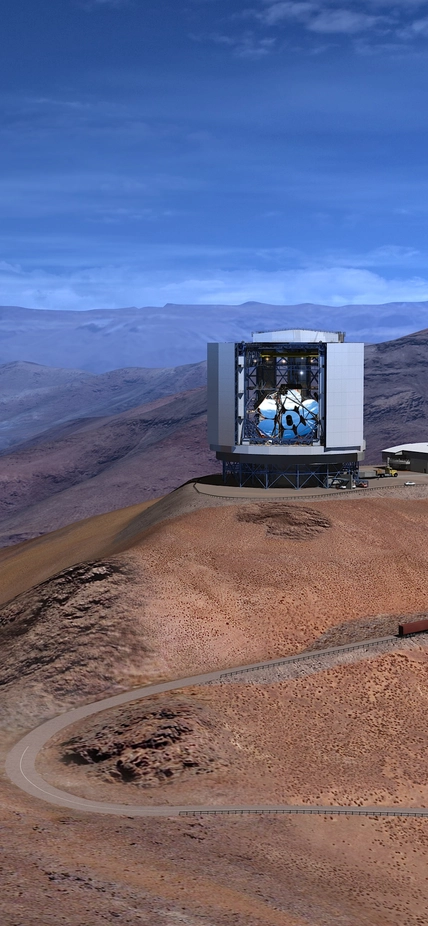Pasadena, CA— The Giant Magellan Telescope (GMT) has passed a major milestone as 11 international partners—including Carnegie—approved its construction, which secures the project’s future and unlocks more than $500 million of work on the world’s most powerful optical telescope.
The 25-meter telescope will be part of the new generation of extremely large optical telescopes. The GMT will enable astronomers to look deeper into space and further back in time, producing images up to 10 times sharper than those produced by the Hubble Space Telescope. It is expected to see first light in 2021 and be fully operational by 2024.
The GMT will be built at Carnegie’s Las Campanas Observatory in northern Chile. It will give scientists a powerful new tool to better understand how stars and galaxies formed shortly after the Big Bang, to measure the masses of black holes billions of light years from Earth, and to discover planets orbiting other stars in the Milky Way galaxy.
“The GMT will herald the beginning of a new era in astronomy. It will reveal the first objects to emit light in the universe and identify potentially habitable planets in the Earth’s galactic neighborhood,” said Wendy Freedman, chair of the Giant Magellan Telescope Organization (GMTO) Board of Directors and University Professor of Astronomy & Astrophysics at the University of Chicago. “The decision by the GMTO partner institutions to start construction is a crucial milestone on our journey to making these amazing discoveries through state-of-the-art science, technology, and engineering.”
The construction approval means work will begin on the telescope’s core structure and on the scientific instruments and giant mirrors that lie at the heart of the US$1 billion project. The mountain-top site in Chile has been prepared for initial construction.
The GMT is more than just a telescope: it is a global scientific collaboration, with institutional partners in Australia, Brazil, Republic of Korea, the United States, and in host nation Chile.
“Carnegie is proud of its long tradition of telescope design and construction and thrilled to host the GMT, which will move us decisively into the future of astronomical discovery,” said Carnegie president Matthew Scott.
“Carnegie astronomers are delighted that we’re moving closer to the day when we and the scientists from our partner institutions can use the GMT to make new and exciting discoveries about our universe,” said Carnegie Observatories director John Mulchaey.
The Giant Magellan Telescope Organization (GMTO) manages the GMT project on behalf of its international partners: Astronomy Australia Limited, The Australian National University, The Carnegie Institution for Science, Harvard University, Korea Astronomy and Space Science Institute, Smithsonian Institution, Texas A&M University, The University of Arizona, The University of Chicago, The University of Texas at Austin, and Fundação de Amparo à Pesquisa do Estado de São Paulo.
__________________
